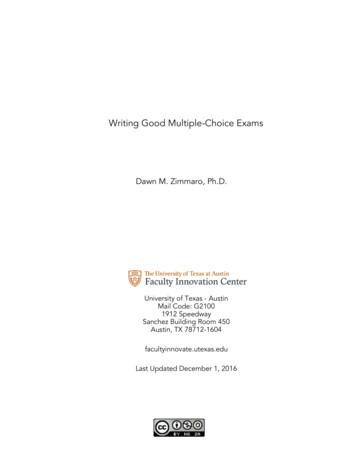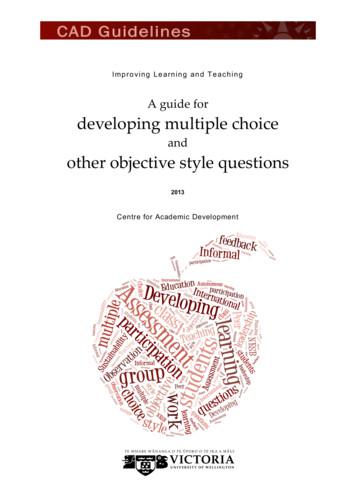Multiple System Atrophy
Multiple System Atrophy Understanding the role of OCCUPATIONAL AND PHYSICAL THERAPY 2017 Patient Caregiver Conference Valery Hanks, OTR/L, CPAM, C/NDT Penny J. Powers, PT, MS, ATP Penny.powers@vanderbilt.edu Valery.hanks@vanderbilt.edu
Objectives Define and explain the professional services provided by Occupational and Physical Therapists Discuss safety considerations and falls risk reduction for patients and caregivers Understand and incorporate exercise and equipment into daily living Discuss therapeutic interventions with MSA
Physical and Occupational Therapy PT is always carried out by a licensed Physical Therapist or licensed Physical Therapist Assistant OT is always carried out by a licensed Occupational Therapist or licensed Occ. Therapist Assistant Practices under the strict guidelines of the American Physical Therapy Association and Occupational Therapy Association State Board of Health in your state.
Occupational Therapy Occupational Therapy helps individuals recovering from injury/illness or with disabilities participate as much as possible in everyday activities Train and/or educate individuals to use adaptive equipment and techniques to improve function Develop UE strengthening and coordination programs and provide splints as needed Assist family members with effectively supporting and/or care for their loved ones
Occupational Therapy Treatment is driven by patient Goals should be dictated by needs of patient and family members Aid in planning for future Help provide external resources SAFETY
Difficulty Dressing Decreased UE coordination can make it difficult to – Button – Zip – Tie shoes – Tie ties Decreased arm strength – Pulling shirts over head – Pulling up pants/undergarments – Getting socks on
Dressing Equipment
Difficulty Grooming/Eating May have trouble scooping food Difficulty getting utensils to mouth Bringing cups/drinks to mouth Controlling toothbrush Using razor Applying makeup
Grooming and Eating
Safety in the BATHROOM Per NIA, nearly 80% reported fall occur in the bathroom Getting on/off toilet may be difficult Safely getting in/out as well as standing in the shower Reaching to wash all areas Hygiene after toileting – Use of a bidet – Flushable wipes
Toileting Equipment
Shower Equipment
Other Considerations for Home Safety Installation of ramps Decluttering living space Widening doorways Installing grab bars Add lighting and use light nights Get medical alarm monitoring necklace Make lists, use calenders Use of alarms to remember medications
Ramps Many considerations for adding ramps – Easier to negotiate than steps – For every 1” of rise – ADA says 12” of length – Wood vs metal - temporary vs permanent – Interior vs exterior – Protected ( inside garage) vs Front of home *** not covered by insurance
Ramps
Stair lifts and chair lifts
ENERGY CONSERVATION Use of these techniques will help maintain energy throughout the day Enable you to get more done with less feeling of fatigue at the end of day Help maintain muscle strength for task performance
ENERGY CONSERVATION PRINCIPLES 1. 2. 3. 4. 5. 6. 7. 8. Avoid rushing Take breaks Plan ahead, gather all necessary items for task Use strongest joint(s) available for specific job Sit rather than stand when possible Use good posture and body mechanics Enlist help of family/friends for strenuous tasks Hire professionals for yard work, home repairs, etc
The Balancing Act We have “multidimensional” lives – Work – School – Home/Family – Fun activities – Community/church – ** no one can do it all***
UPPER EXTREMITY IMPAIRMENTS MSA might cause the following upper extremity deficits: – Slow movements – Tremor or impaired coordination/control of hands – Difficulty using hands to complete daily tasks – Weakness grip and pinching – Hands fatigue quickly – Contractures or loss of range of motion
Equipment to aid with hand impairments
SPLINTING Splinting can help provide support to weak joints and relieve pain Splinting can provide stretching to maintain and/or increase range of motion – Resting hand splints, finger splints Use at night or during the day depending on purpose
SPLINTING Wrist cock up can provide support for weak wrist and improve use of hands Typically used during activities
SPLINTING Resting hand splints can be used to provide stretching to maintain or improve ROM Usually worn at night to allow for use of hand during the day
PT What is Physical Therapy and how it can benefit people with MSA Exercise – it is important – what works and what doesn’t Weight management can help Research – what’s happenin’ in the world of rehabilitation
Physical Therapy Physical therapy is specialty that – remediates impairments – promotes mobility and function – improves quality of life – examination, diagnosis, prognosis, and physical intervention. Physical Therapists and Physical therapist assistants are licensed practitioners
Physical and Occupational Therapy is NOT It is not – Physical Education » » » » » Athletic training Acupuncture Vitamin Therapy Chiropractic Massage
MSA MSA causes deterioration and shrinkage (atrophy) of portions of your brain (cerebellum, basal ganglia and brainstem) that regulate internal body functions, digestion and motor control.
POSTURE Sleeping, sitting, standing – considerations for assessment and desired outcomes Stability vs mobility – What needs to be stable for one to eat a sandwich?
Sitting posture
Standing posture
So what if we can’t stand and move?
Safety First Decrease falls risk – Proper footwear – Goodbye flip flops and mules( slip ons) – Eliminate Loose throw rugs – Proper lighting ( night lights in bathroom) – Handrails – Assistive devices in home and on uneven surfaces – PT evaluation with home assessment
Exercise works when the brain tells the nerves to fire and then the nerves tell the muscle to contract!
MSA and Exercise Strong muscles make life easier – more muscle power ** do more ** last longer Considerations with MSA – Do not become “over heated” – Support stockings may help keep your blood pressure from dropping – During a PT session, it will be important to monitor a patient's BP before, during, and after exercise.
What does the literature say? According to a study by Wedge, et al., – gait training, transfer training, balance activities, and conditioning are necessary in reaching the goal of minimizing fatigue and risk for falling (safe transfers, etc.) – resistance training for knee extensors and flexors, hip abductors and adductors, and ankle plantar flexors were targeted for resistance training. These muscle groups were chosen because of their importance to balance.
Aquatic Therapy - Swimming Swimming – Aquatic Therapy – don’t exercise if the pool and ambient air is too warm – Always swim with supervision – join a class – Take care getting in and out of the pool
So what works? Stretch – Stretch – Stretch – Seated Yoga – Elliptical – Recumbent bicycle – Sit on an exercise ball
So what makes a good stretch Slow, prolonged Use deep breathing No bouncing! Good posture – good positioning for the muscle that you are stretching Hold for a count of 30 seconds
Proceed with caution – really! High Impact exercise – Jump rope – Running, jogging – Treadmill beware! Muscles tire before you know it and the surface just keeps moving!
So keep moving! Dance – movement is life!
What is my body telling me? With all our neuromuscular diseases, learning to listen to what the body is telling you is so important – Cue our MSA patients and their caregivers to “stop early and see how things feel” Stopping activity early is not a BAD thing – can prevent injury/falls/prolonged fatigue and pain for days after the exercise
Keep moving! Individuals should not “stop” moving – Suggest journaling – to figure out how much activity is too much – – “ spend your energy” wisely – Watch out – the old saying “if a little is good – more is better”
Mobility Devices what and when? CANES, ROLLATORS TRAVEL TRANSPORT W/C MANUAL W/C SCOOTERS POWER W/C CMS ALGORITUM – what is this and why is it important?
Research F Wedge. The Impact of Resistance Training on Balance and Functional Ability of a Patient with Multiple System Atrophy.Jrl Geriatric PT: 2008; 31 :79-83. Multiple System Atrophy Trust “ A Guide to Multiple System Atrophy for Physiotherapists” – www. msatrust.org.uk – accessed Sunday, October 1, 2017 13:00 hrs
We are so glad to be on your team! Thanks to the MSA Coalition for inviting us to be part of this collaboration Thanks to the patients, families for being our best teachers Thanks to Dr. Peltier and Dr. Claassen and the other MD’s, nurses ,healthcare providers and researchers at Vanderbilt for being great team members
TEAM Together Everyone Achieves More
Questions?
Physical and Occupational Therapy PT is always carried out by a licensed Physical Therapist or licensed Physical Therapist Assistant OT is always carried out by a licensed Occupational Therapist or licensed Occ. Therapist Assistant Practices under the strict guidelines of the American Physical Therapy Association and Occupational
Essential Iris Atrophy, Pigment Dispersion, and Glaucoma in DBA/2J Mice Simon W. M. John,1'23 Richard S. Smith,12 Olga V. Savinova1 Norman L Hawes1 Bo Chang,1 Dan Turnbull,4 Muriel Davisson1 Thomas H. Roderick,1 and John R. Heckenlively5 PURPOSE. TO characterize ocular abnormalities associated with iris atrophy in DBA/2J mi
reverses lower limb muscle atrophy in individuals with recent ( 10 weeks post- injury) motor complete SCI and to a greater extent than PES. There is level 4 evidence (Scremin et al. 1999; Crameri et al. 2002) that FES may partially reverse the lower limb muscle atrophy
Lens: OU PCIOL well centred, (-) PCO Vitreous: OU PVD, Weiss ring noted Dilated ocular fundus exam: Optic nerve: OD cup-to-disc ration (CDR) 0.75 with large area of peripapillary atrophy, OS CDR 0.75 with peripapillary atrophy, smaller nerve size than OD (Figures 1-4)
measures for fatigability of remaining motor functions in children and adults with Spinal Muscular Atrophy (SMA) across the severity spectrum. Results: We assessed the Endurance Shuttle - Nine H
ORIGINAL PAPER The analysis of antioxidant expression during muscle atrophy induced by hindlimb suspension in mice Tran-Non Nuoc1 Suhee Kim1,2 Sun Hee Ahn2 Jin-Sil Lee2 Byung-Ju Park2 Tae-Hoon Lee1,2 Received: 25 January 2016/Accepted: 1 March 2016/Published online: 12 March 2016
Test Blueprint 10 Preparing to Write Items 11 Description of Multiple-Choice Items 12-15 Multiple-Choice Item Writing Guidelines 16-18 Guidelines to Writing Test Items 19 Sample Multiple-Choice Items Related to Bloom’s Taxonomy 21-23 More Sample Multiple-Choice Items 24-25 Levels of Performance and Sample Prototype Items 26 Good versus Poor Multiple-Choice Items 27-28 Activity: Identifying .
Developing multiple choice and other objective style questions 4 2. Writing multiple choice questions THE FORMAT of a multiple choice question Multiple choice questions are the most commonly used format for presenting objective-style questions. A multiple choice question consists of two parts ñ A stem and several options or alternatives.
50 multiple choice. 5. field test 40 multiple choice field test 46 ITEMS/40 POINTS 45 ITEMS/40 POINTS 55 ITEMS/50 POINTS 45 ITEMS/40 POINTS. 12 Students compose two essays one, for each of. two writing prompts. 40. multiple choice. 5. field test. 49. multiple choice. 1. open ended. 6. field test 50 multiple choice. 5. field test 40 multiple .























